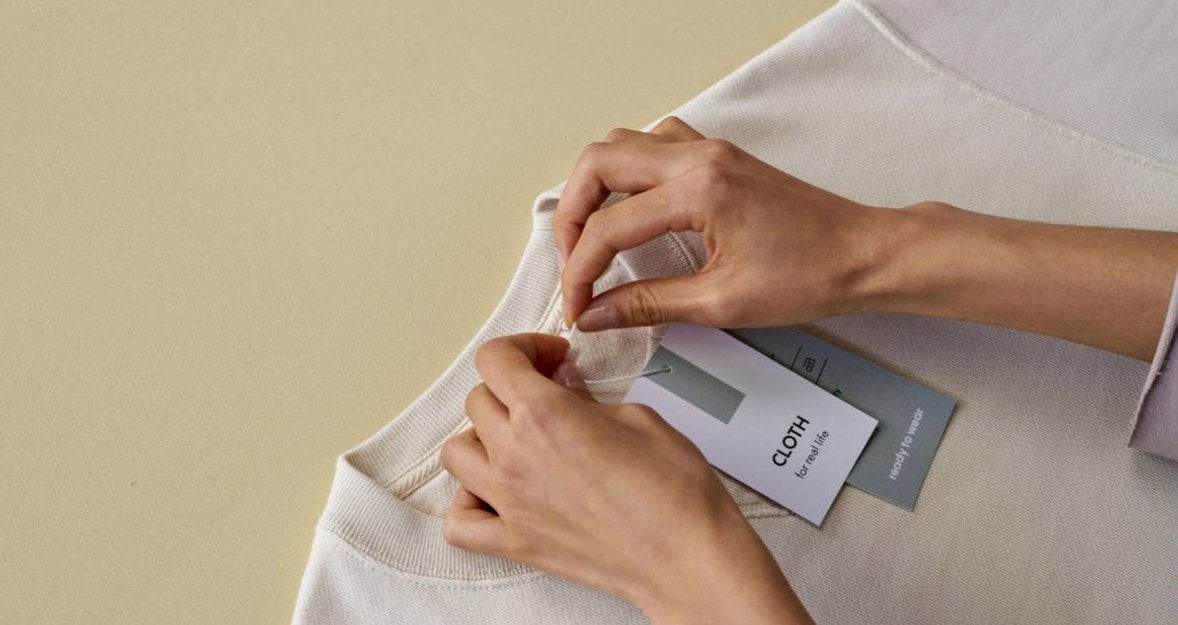Best Photo Editors For Clothing Business
June 03, 2025

Want to boost your clothing brand? Discover the top photo editing tools that help fashion businesses enhance product images, attract customers, and drive sales.
Every one of us, strolling past a shop window, has probably paused at least once to admire a perfectly put-together outfit. How would it look on you? Around 75% of online shoppers say product photos influence their buying decisions. According to a Weebly study, 22% of customers return items because they look different in person than in the pictures.
In a world where the competitive fashion business, the visual and brand identity influence what people pick. But how do you get those standout shots if you don’t have your studio or a big budget for a pro photographer? The answer lies in the next chapter.
Why Every Clothing Brand Needs a Photo Editor
 Before the advent of artificial intelligence and innovative technology, only big brands with their own studios and design teams could afford high-quality e-commerce photo editing. But now, even someone running a small online shop can create polished and professional images. You only need a smartphone and the best photo editor app for clothes.
Before the advent of artificial intelligence and innovative technology, only big brands with their own studios and design teams could afford high-quality e-commerce photo editing. But now, even someone running a small online shop can create polished and professional images. You only need a smartphone and the best photo editor app for clothes.
So, what can today’s software do for you?
Switching up or removing backgrounds. Most online marketplaces like Amazon and Etsy require a plain white or transparent background for product photos. Doing this by hand is time-consuming and tricky, but with AI tools, it takes just a few seconds.
Adding shadows, adjusting lighting, and tweaking colors. Using these little touches breaks up monotony, attracts online customers' attention, and makes your clothes look stylish.
Virtual models. To see how your pieces look on different people, AI can “try on” your clothes using digital models of various ages, genders, and skin tones.
Ready-made templates for social media and marketplaces. You can use pre-set templates with the correct sizes, formats, and styles set to go.
Real-Life Example
ASOS, one of the biggest online fashion retailers, uses automated photo editing and AI to prepare its product images for the catalog. It can upload over 5,000 new items weekly, maintaining a consistent look and top-quality photo.
Exclusive Tools of Endless Possibilities in One AI Editor
Explore Now!If you want to replicate the success of this fashion online realtor, check out our detailed guide, “How to photograph clothing: a step-by-step guide for online shops,” and start boosting your sales now.
Overview of the Best Photo Editors for Clothing Brands
Today’s photo editors offer many features, from automatic background removal and color correction to collage creation and virtual model use. Which pick depends on your goals, budget, and skill level.
Next, we’ll review some of the most popular tools and their standout features that have already proven their worth in fashion photography.
Photoroom
Platforms: Android, iOS, Web
Price: free (with watermark), pro from $4.99/week
What it does:
instantly removes backgrounds with AI;
lets you add shadows and adjust lighting;
offers virtual models in the Pro version;
batch edits multiple photos at once;
ready-made templates for marketplaces.
Downsides:
free version puts a watermark on your images;
pro plan isn’t cheap, but it pays off quickly for businesses.
Photoroom is practical for eBay and Etsy sellers who must quickly prepare product photos. According to eBay, high-quality photos establish customer trust and lead to shorter sales durations.
Canva
Platforms: Web, Android, iOS
Price: free (most features), pro from $15/month

What it does:
thousands of templates for social posts, banners, stories;
team collaboration tools;
background removal and color correction.
Downsides:
some features (like batch background removal) are pro-only;
not designed for deep photo retouching.
Canva is hugely popular with small fashion brands for making banners and social media posts. Over 3 billion designs are created monthly, with most users being small or medium businesses.
remove.bg
Platform: Web
Price: free (with watermark), from $9 for 40 images

What it does:
removes backgrounds in seconds;
integrates with Shopify, WooCommerce;
handles batch editing.
Downsides:
free version adds a watermark;
no advanced editing tools.
Shopify recommends remove.bg for catalog photos. It’s also widely used by Amazon and Etsy sellers for quick, clean product shots. Online retailers at Amazon and Etsy also use it to quickly edit their product images before listing.
Pixlr
Platforms: Web, Android, iOS
Price: free, premium from $1.99/month

What it does:
basic color correction, cropping, and retouching;
works right in your browser;
social media templates.
Downsides:
no batch editing;
fewer AI features than Photoroom or Canva.
In its "Color Matters" marketing campaign, 3M employed Pixlr Express to advertise the ASUS NX500 laptop. After the launch, the ASUS NX500 laptop completed product depletion within 48 hours on Amazon.com.
Fotor
Platforms: Web, Android, iOS
Price: free, pro from $8.99/month
 What it does:
What it does:
filters, retouching, and photo improvement;
AI background removal;
brand kit to save your logos, fonts, and colors for a consistent look.
Downsides:
some features are pro-only
background removal can struggle with tricky images.
Fotor is one of the best photo editing apps for selling clothes, for small businesses, and freelancers. The software can create professional visuals without breaking the bank.
How to Choose the Perfect Photo Editor for Your Brand
 With so many options available, you can easily find one that fits your needs and helps you work efficiently.
With so many options available, you can easily find one that fits your needs and helps you work efficiently.
Step 1. Focus on What Matters to You
Start with the free plan if you’re working with a tight budget. But suppose you’re planning to invest, it’s worth looking at paid programs with AI-powered tools, like automatic background removal, adding shadows, or using virtual models. Check if the software offers ready-made templates for your main channels, so your content always looks on-brand.
Step 2. Test Several Services
Most photo editors offer a free trial, demo access, or basic features without requiring you to sign up, so you can easily test them out. Try editing 10–20 photos in each service. Pay attention to the final image quality, how fast the processing is, how intuitive the interface feels, and how easy it is to export your work.
Keep an eye out for small conveniences like a member plan, the chance to edit photos from your phone, settings sync across devices, or if editing preferences are saved automatically.
Step 3. Identify What Works Best
Is the interface user-friendly, or do you need to search for instructions to locate basic features? Pay attention to how quickly the app processes many images. When handling numerous pictures, opt for the bulk image editor. It should speed up apparel photo editing.
Your AI-Powered Photo Editor for MacOS and Windows
Discover Now!Also, consider how well the editing style matches your brand’s visual identity. Some tools create a glossy, high-fashion look, while others keep things more natural.
Pro Tips for Stylish Clothing Photos
 Taking trendy photos of your clothing is the best way to showcase your brand and attract customers. With these five simple tricks, you can make the products look professional and eye-catching without expensive gear.
Taking trendy photos of your clothing is the best way to showcase your brand and attract customers. With these five simple tricks, you can make the products look professional and eye-catching without expensive gear.
Shoot in Natural Daylight
 Even the best photo editor can’t save an image that’s too dark or poorly lit. Try to take your photos during the day, next to a large window or out on a balcony, using a simple white background, like a sheet, poster board, or photo paper roll. Natural, diffused light (not direct sunlight) is ideal for fashion and product shots, as it keeps colors true and avoids harsh shadows. The goal is to let your clothing stand out, so keep the background clean and distraction-free.
Even the best photo editor can’t save an image that’s too dark or poorly lit. Try to take your photos during the day, next to a large window or out on a balcony, using a simple white background, like a sheet, poster board, or photo paper roll. Natural, diffused light (not direct sunlight) is ideal for fashion and product shots, as it keeps colors true and avoids harsh shadows. The goal is to let your clothing stand out, so keep the background clean and distraction-free.
Use the Same Background For All Your Products
 This creates a cohesive, professional look that’s especially important for your brand, especially if you’re selling online or running an Instagram shop. A uniform background helps build your retail identity and makes it easier for customers to browse your collection. It also streamlines photo editing, as you can apply the same template to all your shots. Light-colored backgrounds tend to boost sales on platforms.
This creates a cohesive, professional look that’s especially important for your brand, especially if you’re selling online or running an Instagram shop. A uniform background helps build your retail identity and makes it easier for customers to browse your collection. It also streamlines photo editing, as you can apply the same template to all your shots. Light-colored backgrounds tend to boost sales on platforms.
Add Shadows and Highlights
 Try experimenting with neon shadows or accent lighting. Neon colors like green or pink grab attention, making your fashion shots or accessory ads look modern and creative. A fashion photo editor with AI tools can automatically add or adjust realistic shadows and highlights. Fashion photography usually uses them to mold model features, body curves, and fabric folds and to highlight particular elements for a refined, sculpted appearance.
Try experimenting with neon shadows or accent lighting. Neon colors like green or pink grab attention, making your fashion shots or accessory ads look modern and creative. A fashion photo editor with AI tools can automatically add or adjust realistic shadows and highlights. Fashion photography usually uses them to mold model features, body curves, and fabric folds and to highlight particular elements for a refined, sculpted appearance.
Show Clothes on Different Models
 It’s no longer trendy to use slim models. Showing your clothes on models with diverse body types makes your brand feel more inclusive. Virtual models are a great alternative if you can’t organize a live photoshoot. AI-powered platforms like Looklet or Lalaland.ai let you dress digital figures with different body shapes, ages, and skin tones. Promoting diversity in your model lineup shows customers that your brand values everyone, making your collection more relatable.
It’s no longer trendy to use slim models. Showing your clothes on models with diverse body types makes your brand feel more inclusive. Virtual models are a great alternative if you can’t organize a live photoshoot. AI-powered platforms like Looklet or Lalaland.ai let you dress digital figures with different body shapes, ages, and skin tones. Promoting diversity in your model lineup shows customers that your brand values everyone, making your collection more relatable.
Prepare Photos for Different Platforms
Follow each platform’s specific size and format requirements. For example, Instagram prefers square images at 1080x1080 pixels (1:1) or vertical posts at 1080x1350 pixels (4:5), while marketplaces may require a plain background and a minimum size of 1000x1000 pixels. Facebook also uses similar dimensions for posts and stories, but has guidelines for cover and ad images. For example, Canva offers ready-made templates to save time and avoid re-editing.
Investing in Great Photos Is Investing in Your Success
 2025 shows that modern photo editors make it possible for even small brands to look professional, save time and money, and most importantly, create a unique style that sticks with your customers.
2025 shows that modern photo editors make it possible for even small brands to look professional, save time and money, and most importantly, create a unique style that sticks with your customers.
If even a small US fashion brand achieved better revenue results by combining a smartphone and an AI editor, why can't you try? Don’t be afraid to experiment by trying different tools, discovering your style, and pushing your creative boundaries.





